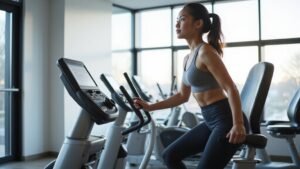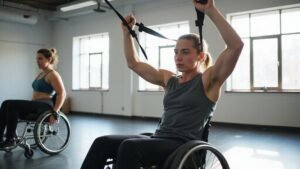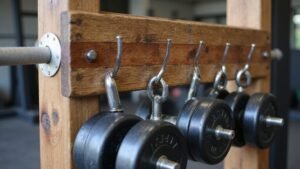In the landscape of adaptive sports, rowing machines stand as bridges connecting ability and ambition. You’ll discover that specialized equipment transforms limitations into opportunities for athletic performance. Adaptive rowing machines aren’t just tools; they’re precision instruments designed to accommodate diverse physical capabilities. Custom seat and handle modifications reveal potential for athletes with disabilities, offering unprecedented access to rowing experiences. Want to understand how technology redefines athletic participation?
Key Takeaways
- Adaptive rowing seats feature customizable widths, heights, and back supports to accommodate diverse physical abilities and provide optimal stability for athletes.
- Specialized handle modifications like Active Hands Grip Aids and Velcro attachments enable athletes with limited hand function to securely grip rowing equipment.
- Stabilizing pontoons and adjustable strapping systems enhance balance and safety for rowers with reduced lower body mobility or control.
- Ergonomic seat designs with gel protectors and strategic padding reduce injury risks while maximizing comfort for adaptive athletes during rowing activities.
- Personalized equipment modifications target individual physiological requirements, promoting independence, performance, and inclusive participation in rowing sports.
Understanding Adaptive Rowing Equipment Needs
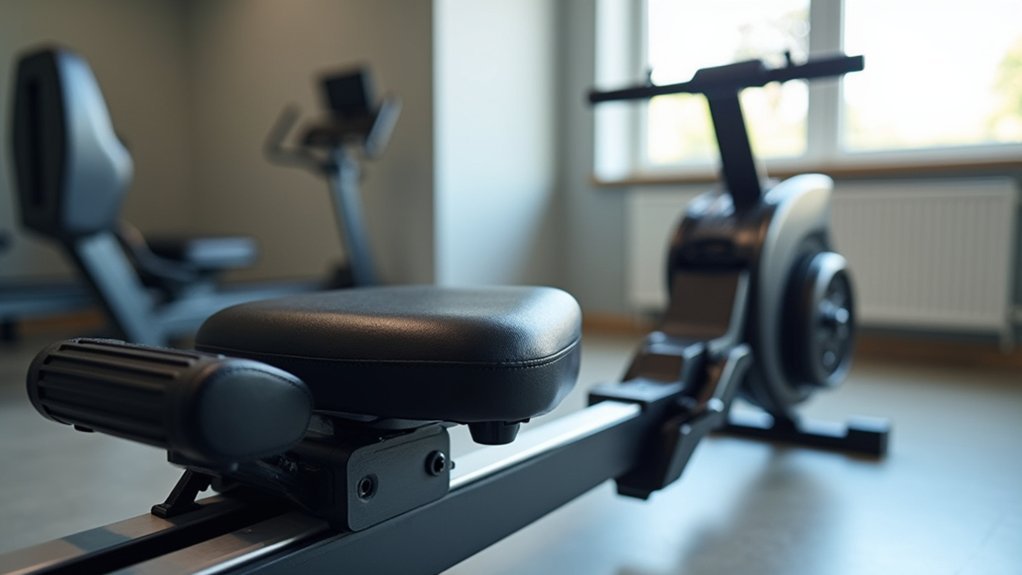
When considering adaptive rowing equipment, understanding the specialized needs of athletes with disabilities becomes paramount to ensuring effective and inclusive training experiences. You’ll find that adaptive rowing machines require precise modifications to accommodate diverse physical capabilities. Stabilising pontoons and specialized seat designs are critical for maintaining balance and support in single scull configurations. Your equipment must address specific challenges like mobility limitations, postural support, and grip functionality.
Key considerations include customizable seat options with enhanced stability, adjustable strapping systems, and ergonomic hand grips. These adaptations enable athletes with varying physical abilities to engage fully in rowing activities. By focusing on individual needs and implementing targeted equipment modifications, you’ll create an environment that promotes independence, performance, and athletic participation for rowers with disabilities.
Seat Modification Techniques for Enhanced Accessibility
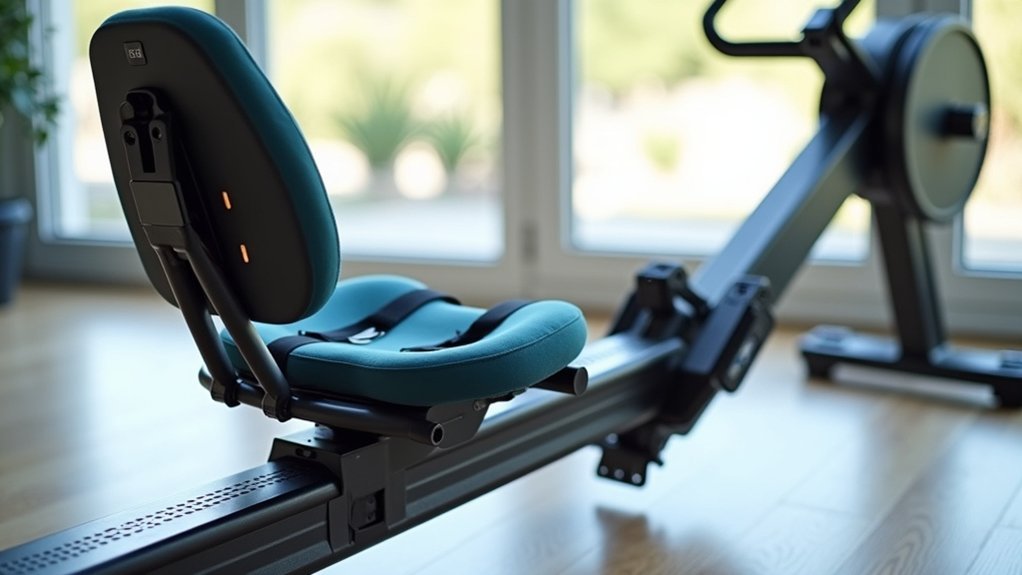
Three primary seat modification techniques can dramatically enhance accessibility for adaptive rowing machines. When you’re focusing on seat modifications for adaptive rowing, you’ll want to take into account these critical adaptations:
- Wider, more stable seats that provide thorough support
- High or low-backed seats tailored to individual trunk stability requirements
- Strategic placement of specialized straps for securing rowers
- Customizable gel protectors for improved comfort and injury prevention
These adaptations optimize support and performance by addressing unique user needs. By implementing targeted seat modifications, you’ll guarantee adaptive rowers can safely and effectively engage with rowing equipment. The key is understanding each individual’s specific impairments and designing seat solutions that enhance mobility, stability, and rowing potential. Precise seat customization transforms adaptive rowing machines from standard equipment into personalized tools that empower athletes with diverse physical capabilities.
Handle Adaptation Strategies for Improved Grip
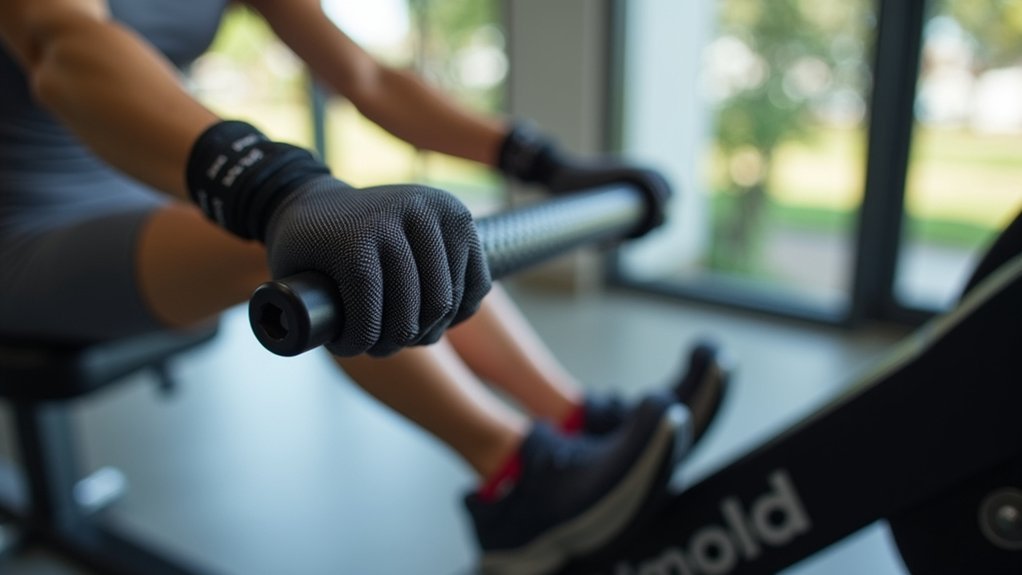
Because adaptive rowing demands precise equipment customization, handle adaptation strategies play a crucial role in enhancing grip functionality for athletes with diverse physical capabilities. Single athletes classified with limited hand function can benefit from specialized handle modifications that improve control and comfort.
Active Hands Grip Aids and custom handle designs offer targeted solutions for adaptive single rowers. You’ll find that ergonomic grips, adjustable width handles, and strategic Velcro attachments can transform rowing experiences. These adaptations allow athletes to secure their grip effectively, reducing strain and maximizing performance potential.
Key considerations include individual physical needs, specific grip challenges, and desired rowing intensity. By selecting appropriate handle modifications, you’ll enable athletes to engage more confidently and independently in rowing activities, ultimately enhancing their athletic participation and enjoyment.
Stability Solutions for Rowing Machines
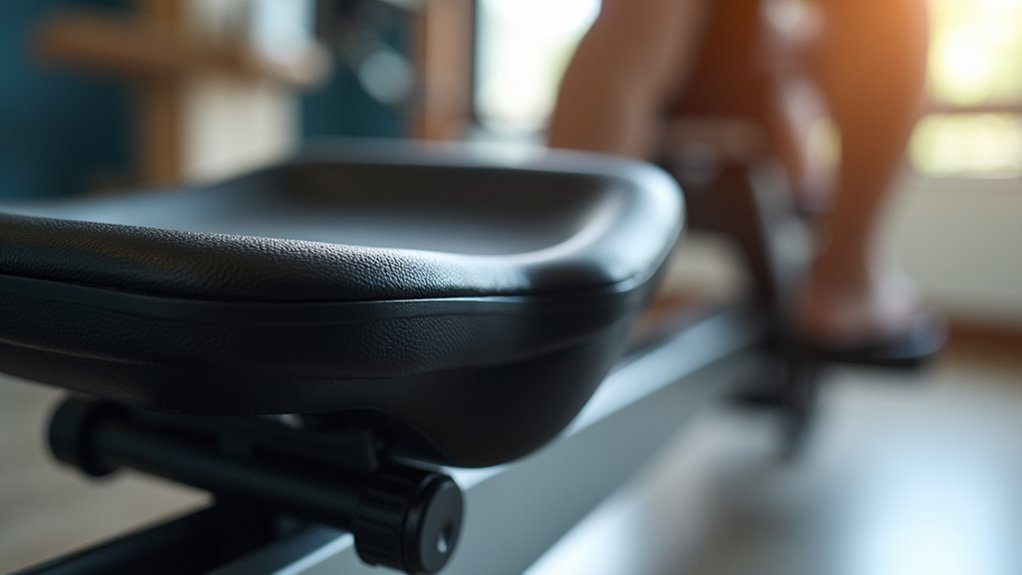
Building upon handle adaptation strategies, stability solutions represent another critical dimension of adaptive rowing machine design. Seat stability enhancements focus on providing secure, comfortable support for athletes with diverse physical capabilities. Key adaptive modifications include:
- Wider base seats like the Concept2 Tractor Seat for improved support
- Customized clamp systems to secure seats and prevent unexpected movement
- High-backed seats offering enhanced trunk stability for users with limited control
- Gel protectors integrated into seat designs to reduce potential injury risks
Stabilizing pontoons and specialized seat configurations can dramatically improve balance and safety for athletes with reduced lower body function. These strategic interventions transform rowing machines from standard equipment into personalized, adaptive training platforms that accommodate individual physical needs while maintaining performance potential.
Custom Seat Design for Different Physical Abilities
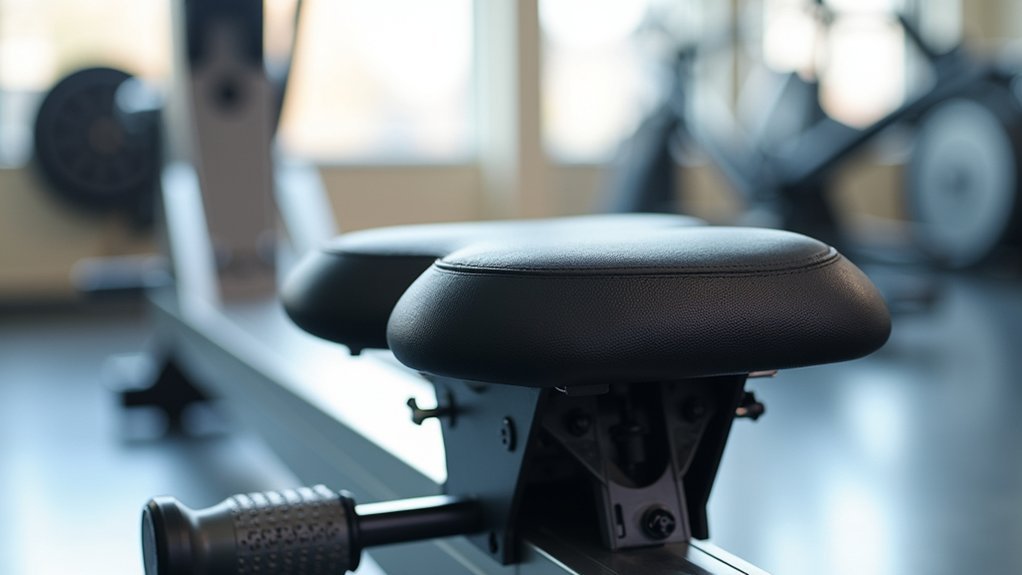
While adaptive rowing technology evolves, custom seat design emerges as a critical interface between athletes and rowing machines, specifically tailored to accommodate diverse physical abilities. You’ll find that custom seat materials and seat height adjustment are pivotal in creating a superior rowing experience. Specialized seats with high-backed support can stabilize users with limited trunk control, while integrated Velcro straps guarantee safe, quick-release mechanisms during emergencies. By incorporating user feedback integration, manufacturers can develop seats with precise contours and cutouts that promote better body alignment and reduce strain. Fixed seats with gel protectors offer additional cushioning for users with sensitivity issues, and adjustable features accommodate varying body sizes and disabilities. The result is a personalized, functional seating solution that enhances comfort and performance for adaptive rowers.
Ergonomic Considerations in Adaptive Rowing
Ergonomic design transforms adaptive rowing from a basic physical activity into a personalized, biomechanically optimized experience. You’ll discover that adaptive rowing machines prioritize user-specific mobility enhancement strategies through carefully engineered components.
Key ergonomic considerations include:
- Customizable seat configurations supporting varied physical abilities
- Adjustable strapping systems for stability and safety
- Specialized handle modifications improving grip control
- Adaptive posture techniques integrated into equipment design
When selecting an adaptive rowing machine, you’ll want to focus on user comfort optimization. The right equipment provides strategic support, minimizing physical strain while maximizing performance potential. Innovative design elements like high-backed or gel-protected seats guarantee that athletes with diverse mobility levels can engage effectively and safely in rowing activities, transforming physical limitations into opportunities for athletic expression.
Safety Protocols for Modified Rowing Equipment
Because safety represents the paramount concern in adaptive rowing, modified equipment demands rigorous protocol implementation to protect athletes with diverse physical capabilities. You’ll need to focus on thorough safety inspections that systematically evaluate equipment modifications, ensuring all adaptive seats and handles meet strict performance standards.
User education is critical. You must thoroughly understand specific safety protocols, including proper seating techniques and correct usage of safety restraints. Compliance guidelines mandate secure installation methods like robust clamps and stabilizing pontoons that prevent unexpected movement during training or competition.
Regular equipment assessments are non-negotiable. You’ll want to examine adaptive rowing machines for wear, structural integrity, and functional reliability. Your vigilance in maintaining modified equipment directly contributes to preventing potential injuries and ensuring a safe rowing experience.
Performance Optimization Through Equipment Adaptation
As athletes with diverse physical capabilities seek peak performance, adaptive rowing machines undergo strategic modifications that transform equipment limitations into competitive advantages. Enhance your rowing experience through targeted adaptations that improve performance measurement techniques:
- Customize seat height and position for ideal push-off mechanics
- Integrate specialized grip handles to maximize hand function
- Implement stabilizing pontoons for improved balance control
- Utilize adjustable footrests and seat strapping systems
User feedback systems play a critical role in refining adaptive training strategies. By focusing on personalized equipment modifications, you’ll release potential previously constrained by physical challenges. Each adaptation—from high-backed seats to grip aids—represents a precision-engineered solution designed to amplify your rowing performance. The key lies in understanding your unique physiological requirements and matching them with targeted technological interventions that transform adaptive rowing equipment from basic assistive tools into high-performance training platforms.
Inclusive Rowing: Technology and Design Innovations
When technological innovation intersects with inclusive design, adaptive rowing machines revolutionize accessibility for athletes across diverse physical capabilities. You’ll discover assistive technology transforming rowing through customizable solutions like high-backed seats, stabilizing pontoons, and adjustable strapping systems. These innovations directly respond to user feedback, ensuring athletes with mobility challenges can engage fully in the sport.
Community engagement drives technological advancement, with organizations like British Rowing supporting equipment development that meets rigorous classification standards. Handle modifications and specialized seating demonstrate how design can overcome physical limitations, enabling athletes to experience rowing’s dynamic performance potential. By prioritizing individual needs, adaptive rowing machines break down traditional barriers, creating pathways for participation that celebrate athletic diversity and technological ingenuity.
Frequently Asked Questions
How Can I Make My Rower Seat More Comfortable?
You’ll enhance seat comfort by adding gel cushions, installing lumbar support, and exploring padded seat covers. Experiment with different thickness and materials to find your ideal setup, reducing pressure points during intense rowing sessions.
Is 20 Minutes of Rowing a Day Enough?
Sarah, a desk worker, transformed her fitness by rowing 20 minutes daily. This duration effectively boosts cardiovascular health, burns calories, and enhances muscle tone when performed with proper intensity and consistent workout machine effectiveness.
Which Rowing Machine Has the Most Comfortable Seat?
You’ll find the Concept2 Model D offers the most comfortable seat with its ergonomic design, contoured seat materials, and adjustable features. It provides ideal support and reduces fatigue during intense rowing sessions, making it a top choice for serious athletes.
Can People With Bad Knees Use a Rowing Machine?
Like a gentle river flowing around rocks, you can navigate rowing with bad knees using knee-friendly modifications, low-impact workouts, and adaptive rowing techniques that minimize joint stress while strengthening supporting muscles.
Conclusion
Adaptive rowing machines revolutionize accessibility through innovative seat and handle modifications. You’ll discover that customized equipment isn’t just about accommodation—it’s about empowerment. Can technology truly bridge physical limitations? By integrating ergonomic design, adjustable supports, and specialized grip solutions, adaptive rowing transforms athletic potential. These precision-engineered modifications guarantee athletes with diverse physical abilities can experience the exhilaration of rowing, breaking barriers and redefining performance expectations.



